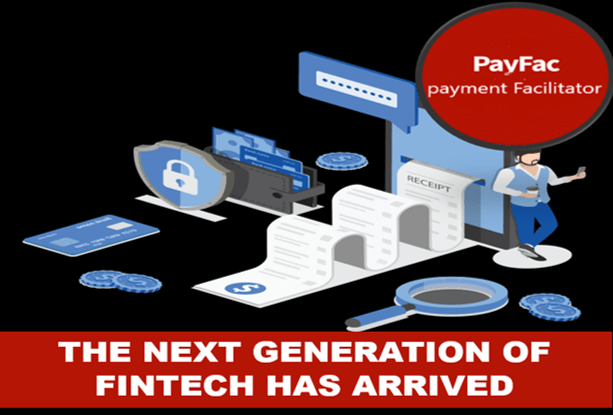THE NEXT GENERATION OF FINTECH HAS ARRIVED
By Arturo Alejandro Canseco,
Legal & fintech associate at Ramos Ripoll Schuster firm
Payments – Fintech Foreign Advisor at Etisalat, Mexico
THE MAIN KEYS AND HOW IS CHANGING EVERYTHING IN PAYMENTS.
“The future is today, technological advancements have led to step changes in innovation, with payments becoming faster, on both a local and global scale, easier and more convenient”. Arturo Canseco
The global payments ecosystem is constantly evolving into a complex global network who is facing the pandemic caused by Covid-19. As new Fintech startups, disrupt the way we move money around the world, businesses of all sizes need to keep informed about the changing payments landscape. To remain relevant and competitive, you need to understand today’s payment trends and consider how to advance your payment processes to meet the demands of modern commerce instead everyday new tools are developed and disruptive technology allows fresh talent to be seen and compete in places they never might have. When it comes to the merchant services space, Payments Facilitators (“PayFacs”) have emerged to become one of those technology capabilities that have challenged the balance of power in the merchant services space.
What is a PayFac (Payment Facilitator) ?
A payment facilitator, or PayFac, is a sub- merchant account used by merchant service providers to provide payments settlements processing services to their own clients, known as sub- merchants. Those sub-merchants then no longer have to get their own MID and can instead be boarded under the master Merchant Identification Account (“MID”) of the PayFac who is sponsored by a bank, a PayFac simplifies mechant account enrollment which allows smaller companies and medium companies gain the upper hand.
How PayFac work?
The PayFac owns the MID in order to process transactions, the acquirer merchant must apply for a merchant account. This includes an application with 7-8 key data points, and underwriting process working out a pricing agreement, and integrating the latest payment technology.
During the onborarding process, the data points are evaluated by an underwriting tool and approved or declined in real time, if everything looks good, the payment gateway is opened and the merchant is boarded as a sub merchant under the PayFac´s master merchant ID.
With a PayFac sub-account, the merchant doesn’t need to go through the lengthy underwriting process to set up an individual merchant account, since it is handled by the merchant services provider. Another important aspect of PayFac models is transparent pricing — one, simple, monthly flat rate makes it easy for merchants to know upfront exactly how much they are paying.
In the Payment Facilitation (“PayFac”) ecosystem, two sets of winners are likely to emerge:
(1) existing PayFacs (e.g., Stripe, Square) who provide payment solutions to customers below a certain size, and (2) Payments-as-a-Service (“PaaS”) companies (e.g., Finix, paymul) enabling software customers to become PayFacs themselves as they reach a scale worthy of that investment.
While we believe the PayFac ecosystem will support multiple winners serving different customer sets on either side of this scale threshold, a single player could become dominant by offering product offerings aimed at both, a Payment Facilitator [Payfac] can be thought of as being a Master Merchant that processes credit and debit card transactions for sub-merchants within their payment ecosystem. These sub merchants don’t have to go through the traditional merchant account application process and can typically enroll and begin accepting customer payments in hours.
Both the speed at which you can have new clients processing payments and eliminating the friction points involved in having the complete a conventional merchant account application make the Payment Facilitation business model very attractive to SaaS platforms that see the instant onboarding as vital to their applications success.
Square is a very good example of a business that has successfully implemented this model.
Differences between Payment Proccesor
A payment processor authorizes transactions and routes them to the appropriate card networks. It also handles settling funds from the bank that issued the consumer’s card to the acquiring bank meanwhile a payment facilitator must integrate with a payment processor to get transactions where they need to go.[1]
Becoming a PayFac or Payment Service Provider (“PSP”) lends itself well to some businesses that fall into the software provider classification and particularly SAAS business service providers.
References
https://www.mastercard.us/en-us/business/overview/start-accepting/payment-facilitators.html
https://www.kabbage.com/resource-center/manage/everything-you-need-to-know-about-payment-processors/
https://www.statista.com/statistics/811969/worldwide-payment-facilitator-transaction-volume/
https://www.bis.org/cpmi/publ/d68.pdf
[1] https://www.kabbage.com/resource-center/manage/everything-you-need-to-know-about-payment-processors/
- METAVERSE - February 4, 2022
- Banking as a Service and BaaP - May 19, 2021
- The Tokenomics phenomenon - April 19, 2021


Stay connected